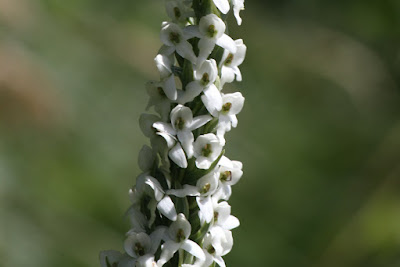A photographic record of the beautiful and often rare native orchids that can be found in our area.
Tuesday, August 25, 2015
More Stream Orchids
While in the Olympics, first with several friends and then with the Native Orchid Society, we visited some new sites for Epipactis gigantea, the Stream Orchid or the Chatterbox, and also investigated another new site. We found hundreds of them in an area where we have only previously known of a few plants, and since this species is relatively rare in Washington, it was good to know that it is flourishing in this location. We were disappointed, however, to find that they were nearly finished flowering in all the locations and that in one location the deer had eaten most of the flowers. The species is one of our more attractive orchids both in the color of the flowers and their size. The plants grow to 100 cm though the plants we saw were much shorter, and the flowers are 3 cm across. The plant is invariably found in wet locations, in this case along the edge of an inland lake and well deserves its name, Stream Orchid.
Thursday, August 20, 2015
Twenty-sixth Orchid of the Season and Others
The orchid featured in this post is the Alaskan Piperia, not a common orchid in our area, and in this case a rare dwarf form of the species, Platanthera or Piperia unalascensis fma. olympica. The species can be as tall as 90 cm but in these are less than 30 cm and are found, as far as I know, only in one location, the top of Hurricane Ridge in Olympic National Park.
Platanthera unalascensis var. olympica
We caught them at the very end of their blooming season, though that was very early this year due our early spring and very hot, dry summer. Most of them, especially those in exposed areas, were finished, but there were a few in more sheltered areas that were still in good form. We did not find any sign of the normal form of the species, however, at lower elevations.
Along with this species we saw a number of others in the Olympics which we had seen earlier in the year and elsewhere. These were seen further west of Hurricane Ridge and included two other Platantheras, the Elegant Piperia, Platanthera elegans, and the Long-spurred Piperia, Platanthera elongata, and the Stream Orchid, Epipactis gigantea, which was almost finished blooming, though very early.
Platantherra elegans
Platanthera elongata
It should be noted that all the Piperias have recently been reclassified as Platantheras, so these species are now Platanthera unalascensis, Platanthera elegans and Platanthera elongata. These species were all originally classified as Platantheras or Habenarias, but were moved to a new genus in 1901. There is still a great deal of disagreement about their classification.
Monday, August 17, 2015
Twenty-fifth Orchid of the Season and Others
Neottia banksiana, also known as Listera caurina, is one of our most common orchids. known as the Northwestern Twayblade, we see it most often in open forests and along trailsides, and that was where we found these examples in Olympic National Park. At first glance it looks like the much rarer Neottia convallarioides, but is easily distinguished from that species by the blackish markings on the top of the lip. It grows to 30 cm tall, though these plants were all smaller and carries up to fifteen insect-like flowers. The friend from Canada who I was with when I photographed these found several plants with a third leaf, a much rarer form of the species, fma. trifolia.
Neottia banksiana
Neottia banksiana fma. trifolia
The same day we found the Neottias we also found Platanthera dilatata var. leucostachys and Platanthera stricta, the Tall White Northern Bog Orchis and the Slender Bog Orchis. These were growing on wet banks and in wet ditches along the roadside, exactly where one would expect to find them. Though we found hundreds of the Neottias, these were very few in number, due I am sure to the hot dry summer we've had. These were still in good conditions but there were far fewer of them than previous years and we found none of the hybrid between the two species, Platanthera xestesii, Estes Rein Orchis, but that may have been due to overly enthusiastic mowing of the roadsides by the Park Service.
Platanthera dilatata var. leucostachys
Realized as I prepared this post that I never photographed Platanthera stricta.
Subscribe to:
Comments (Atom)




















































